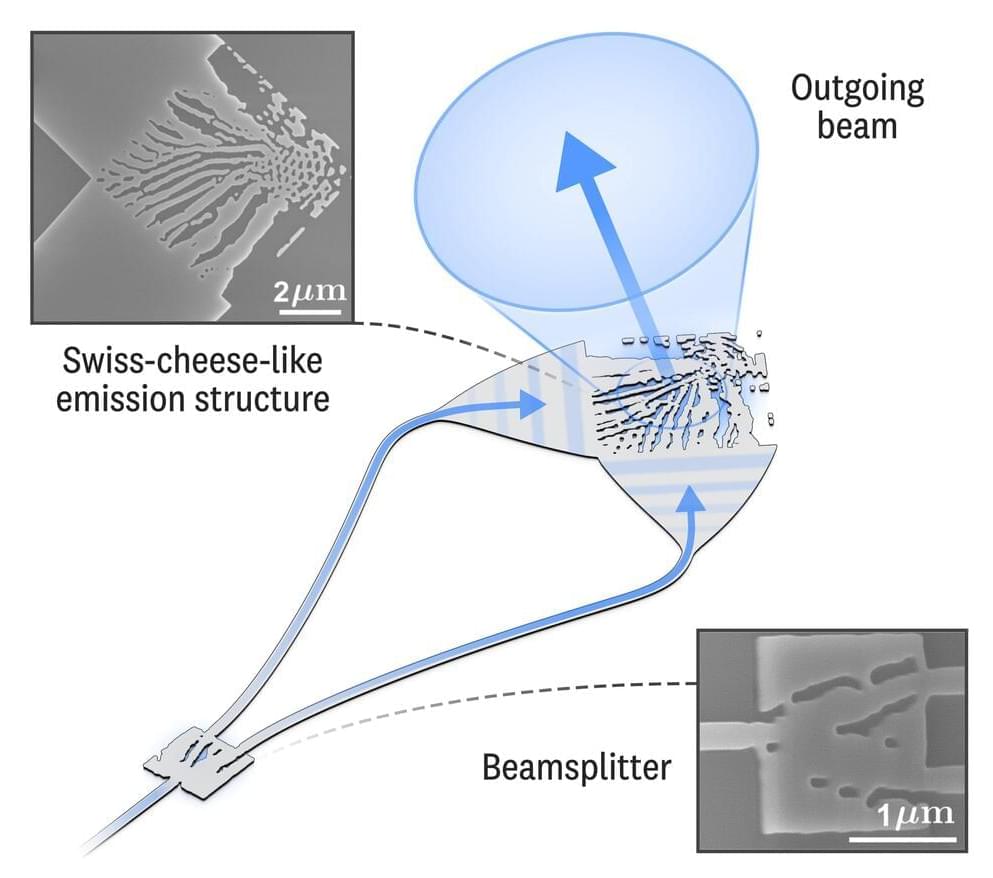Researchers at the National Institute of Standards and Technology (NIST) have devised a photonic circuit on a chip that transforms a single incoming beam of laser light into a panoply of new beams, each with a host of different optical properties.
The newly generated beams—which retain the frequency of the original beam—simultaneously exit the circuit at different locations along the chip. That allows scientists and engineers to select the specific characteristics of one or more beams needed for a particular application.
Precision shaping and controlling beams of visible light are critical for diagnosing and studying human diseases, trapping atoms that form the basis of the world’s most accurate clocks, quantum computing, and many other quantum-based technologies.
